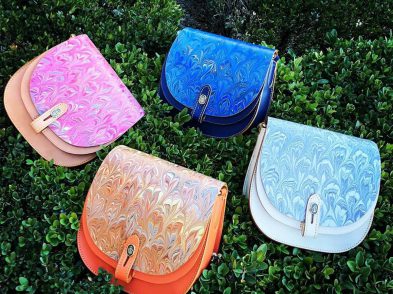I could have twirled for hours. I was wearing my favorite skirt, the one that spread out in a perfect circle from my waist when I spun around. It was powder blue cotton and I had picked it out myself. I wanted to be a dancer. That skirt was about as close as I would ever come.
I wore it nearly everywhere for a summer, usually with my ballerina pink tights to complete the ensemble. Although I was seven years old, I still remember the feeling I had when I wore it: I felt beautiful. I felt like a dancer.
That was the first time I realized that clothes can transport a person. I discovered clothing could create an identity and a perception out of only a wish.
Fashion is a type of communication, abbreviating and clarifying an individual’s culture, values, economic status or something as simple as their plans for the day. Fashion is arguably the principal means we have of being known to people we will never actually meet. The way people dress silently conveys who they are.
Italian art has a history of taking what is classic and reinventing it so well that the reinventions become classics. In the same country where Brunelleschi, Michelangelo and Donatello gave the world the Renaissance, Ferragamo, Armani and Valentino reinvented fashion. During the Italian fashion renaissance, casual wear was invented, colors were used in new and exciting ways, and both men and women looked sexy at the same time.
When the Italian fashion industry rose out of World War II, the plethora of color and casual wear said a lot about Italy to the rest of the world: Italy was a country ready to celebrate the end of the war and the beginning of its economic boom. Italians were eager to enjoy the good life that their wine, coastlines and climate afforded them. Italy was finally allowed to show its true colors, which, surprisingly, were uncompromisingly bright and well tailored.
When Italy began exporting its fashion throughout Europe and the United States, the rest of the world redefined Italy as represented by little more than clothes. Whether or not the stereotypes are true, the country became associated with relaxation, youth, beauty and glamour. Of course there were many other exports that similarly defined the country (films and automobiles cannot be ignored) but the Italian fashion industry came to stand for much more than ball gowns and leather bags. Fashion represented the nation and its people as a whole.
And so, for the last 50 years, Italy and fashion have become almost synonymous. In fact, most Americans consider Italy to be one of the most glamorous places on earth.
When I arrived in Florence to study for the semester, I was almost immediately reminded of the lesson that I learned with my dancing skirt as a child. Clothes are shortcuts, symbols that tell us immediately what we need to know about a person. In this city you can often determine nationality based on dress.
To the rest of the world, Italy has become known for the way that it dresses itself and by the garments that it calls beautiful. As much as this is true for Italy, I have been reminded that it is also true for individuals. In Italy it is clear that clothes are the outward symbols of what an individual values, be it labels, comfort, individuality, price or quality. Clothing is an abbreviation for what a person can never tell a stranger about himself.
Indeed there is more to life than fashion, but there is also more to fashion than labels and fabrics. Fashion is fun. Fashion is art. Fashion represents us as individuals and, for better or worse, fashion represents this country, its economy and its creative spirit.




